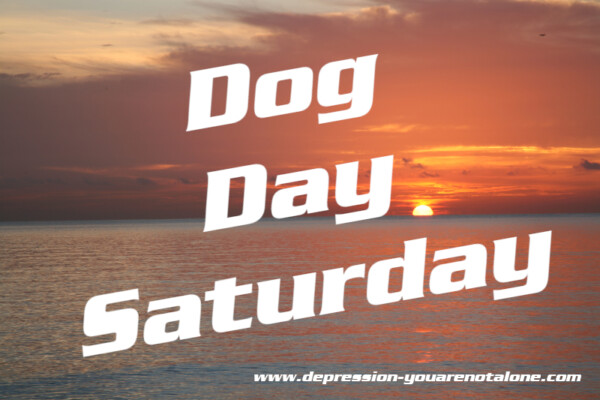Dog Day Saturday 2023-07-15
Owning and interacting with pets, according to studies, can be a form of therapy for many. We have dedicated Saturday to dogs and Wednesday to cats, when we will post an article on each of those days. We will also post articles on occasion about other animals people may have as pets. – Editorial Team
Appenzeller Sennenhund
By Editorial Team

Appenzeller Blaess, CC BY-SA 3.0, via Wikimedia Commons
The Appenzeller Sennenhund, also known as the Appenzeller Mountain Dog or Appenzell Cattle Dog, is a medium-sized breed of dog originating from Switzerland. It is one of the four Swiss Mountain Dogs and is known for its versatility, agility, and herding capabilities. In this discussion, I will delve into various aspects of the Appenzeller Sennenhund breed, including its history, appearance, temperament, care requirements, and more.
History:
The Appenzeller Sennenhund is believed to have descended from large Molossian-type dogs brought to Switzerland by the Romans over 2,000 years ago. These dogs were later crossed with local herding dogs, resulting in the development of the Appenzeller breed. They were primarily used as herding and livestock guardian dogs in the Appenzell region of Switzerland. The breed’s intelligence, agility, and working instincts made it well-suited for driving cattle and protecting farms. The Appenzeller Sennenhund was officially recognized as a distinct breed in the late 19th century.
Appearance:
The Appenzeller Sennenhund is a well-muscled, medium-sized dog with a strong and sturdy build. Here are some key features of their appearance:
Size: Males typically stand between 20 to 22 inches (50-56 cm) at the shoulder, while females are slightly smaller, ranging from 18 to 20 inches (46-50 cm).
Weight: The breed’s weight ranges from 49 to 70 pounds (22-32 kg).
Coat: They have a short double coat, with a dense and thick undercoat and a harsh outer coat. The color pattern is tri-color, with a black base coat, symmetrical rust markings on the cheeks, eyebrows, chest, and legs, and white markings on the head, neck, chest, and tip of the tail.
Tail: The tail is traditionally docked, though it is illegal or restricted in many countries. Undocked tails are strong and carried curled over the back.
Temperament:
Appenzeller Sennenhunds are known for their energetic, intelligent, and spirited nature. Here are some key traits of their temperament:
Lively and Active: They are highly energetic dogs that require regular exercise and mental stimulation to stay happy and healthy. Daily walks, playtime, and engaging activities are important for their well-being.
Intelligent and Trainable: This breed is intelligent and eager to learn. They respond well to positive reinforcement training methods and enjoy having a job to do. Early socialization and consistent training are essential to shape their behavior.
Protective and Alert: Appenzellers have a strong protective instinct towards their family and property. They make excellent watchdogs and will alert their owners to any potential threats.
Good with Children: When properly socialized, Appenzeller Sennenhunds can be great companions for children. They are generally patient and tolerant, but supervision is important, especially with younger children due to their exuberant nature.
Socialization: Early and ongoing socialization is crucial to ensure they are well-rounded and friendly with other animals and unfamiliar people.
Exercise and Training:
Appenzeller Sennenhunds are an active breed that thrives with regular physical and mental exercise. They require a significant amount of daily exercise to maintain their well-being. Engaging activities such as long walks, jogs, hikes, obedience training, agility training, and interactive games are recommended. Mental stimulation is equally important, as they enjoy problem-solving tasks and learning new tricks.
Training should be consistent, firm, and positive. Early socialization is crucial to help them develop good behavior and prevent potential aggression or fearfulness towards strangers or other animals.
Grooming:
Appenzeller Sennenhunds have a relatively low-maintenance coat. Their short, dense fur only requires regular brushing to remove loose hair and keep the coat in good condition. During shedding seasons, more frequent brushing may be necessary to manage the increased hair loss. They are considered a clean breed and don’t have a strong doggy odor.
Other routine care includes regular teeth brushing, nail trimming, and ear cleaning to maintain overall hygiene.
Health:
Like all dog breeds, the Appenzeller Sennenhund is prone to certain health conditions. Responsible breeders strive to minimize the occurrence of these issues through health testing and careful breeding practices. Some common health concerns in Appenzellers include:
Hip Dysplasia: This is a hereditary condition where the hip joint doesn’t develop properly, leading to joint problems and lameness. Hip dysplasia can be mitigated by screening breeding dogs for this condition.
Elbow Dysplasia: Similar to hip dysplasia, elbow dysplasia is a developmental abnormality of the elbow joint, leading to lameness and arthritis.
Progressive Retinal Atrophy (PRA): PRA is an inherited eye disease that leads to gradual vision loss and, in severe cases, blindness. Regular eye examinations by a veterinarian can help detect and manage this condition.
Entropion: Entropion is a condition where the eyelids roll inward, causing the eyelashes to irritate the eye. Surgical correction may be required for severe cases.
It’s important to choose a reputable breeder who tests their breeding dogs for these and other potential health issues to ensure the overall health of the breed.
In summary, the Appenzeller Sennenhund is a versatile, energetic, and intelligent breed with a strong herding instinct. They require an active lifestyle, consistent training, and socialization to be well-adjusted pets. With proper care, exercise, and early socialization, they can make wonderful companions for active individuals or families.

